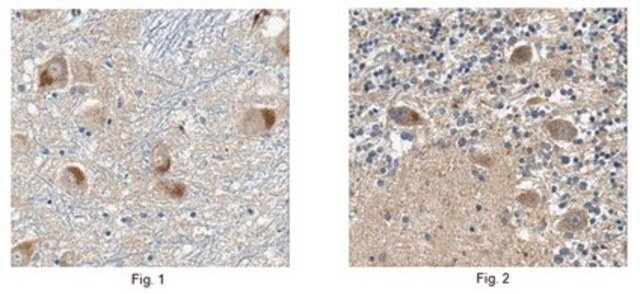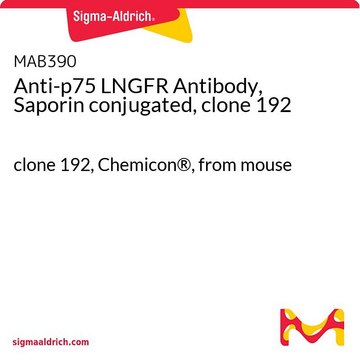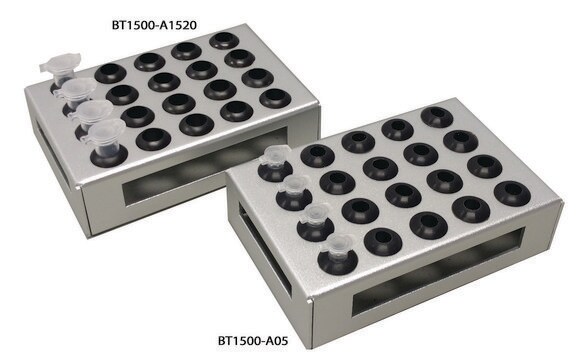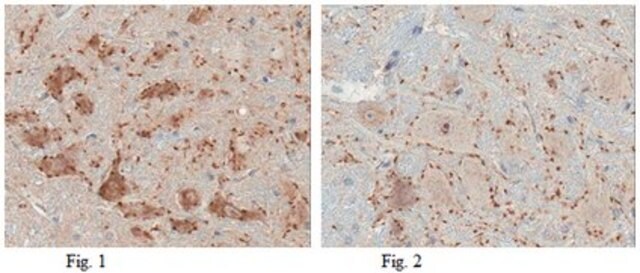MAB390-100UG
Anti-p75 LNGFR Antibody, Saporin conjugated, clone 192
clone 192, Chemicon®, from mouse
Sinónimos:
p75 Low Affinity Neurotrophin Receptor, NGFR
About This Item
Productos recomendados
biological source
mouse
Quality Level
conjugate
saporin
antibody product type
primary antibodies
clone
192, monoclonal
species reactivity
rat
should not react with
mouse, human
manufacturer/tradename
Chemicon®
technique(s)
immunolesioning: suitable
isotype
IgG1
NCBI accession no.
UniProt accession no.
shipped in
dry ice
target post-translational modification
unmodified
Gene Information
human ... NGFR(4804)
Specificity
Application
Neuroscience
Neurodegenerative Diseases
Neurochemistry & Neurotrophins
Physical form
Storage and Stability
Other Notes
Legal Information
Disclaimer
¿No encuentra el producto adecuado?
Pruebe nuestro Herramienta de selección de productos.
Certificados de análisis (COA)
Busque Certificados de análisis (COA) introduciendo el número de lote del producto. Los números de lote se encuentran en la etiqueta del producto después de las palabras «Lot» o «Batch»
¿Ya tiene este producto?
Encuentre la documentación para los productos que ha comprado recientemente en la Biblioteca de documentos.
Nuestro equipo de científicos tiene experiencia en todas las áreas de investigación: Ciencias de la vida, Ciencia de los materiales, Síntesis química, Cromatografía, Analítica y muchas otras.
Póngase en contacto con el Servicio técnico








